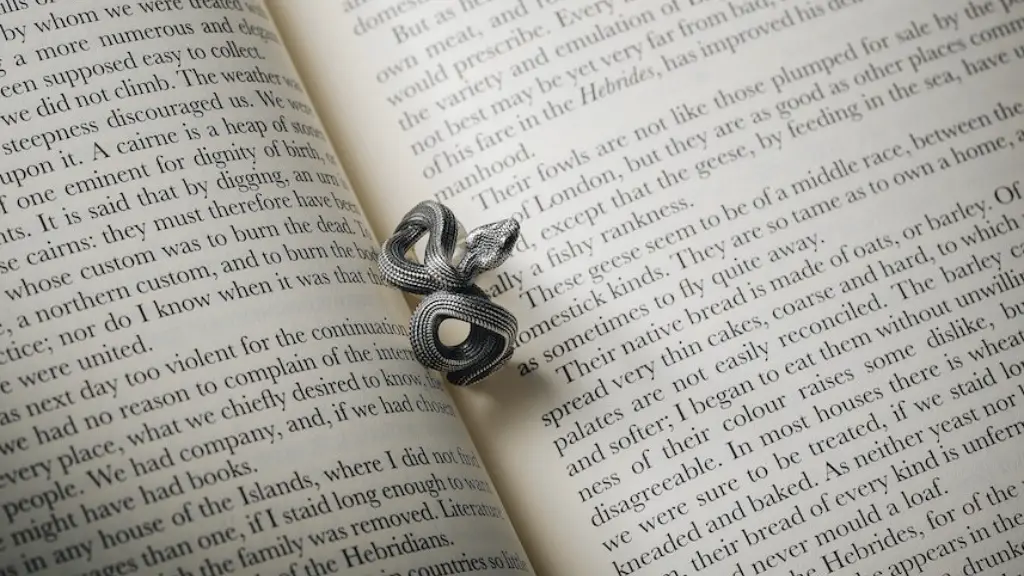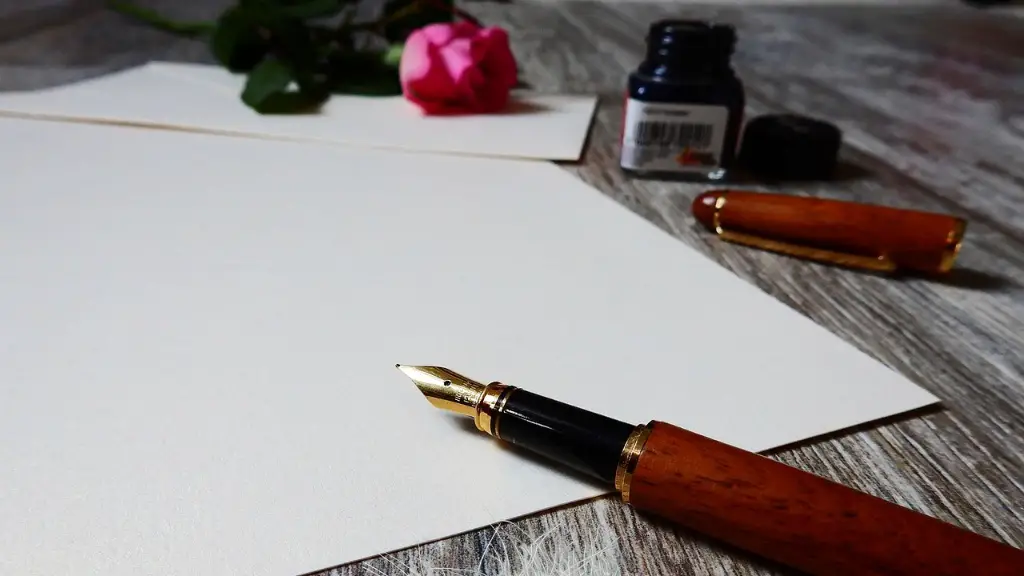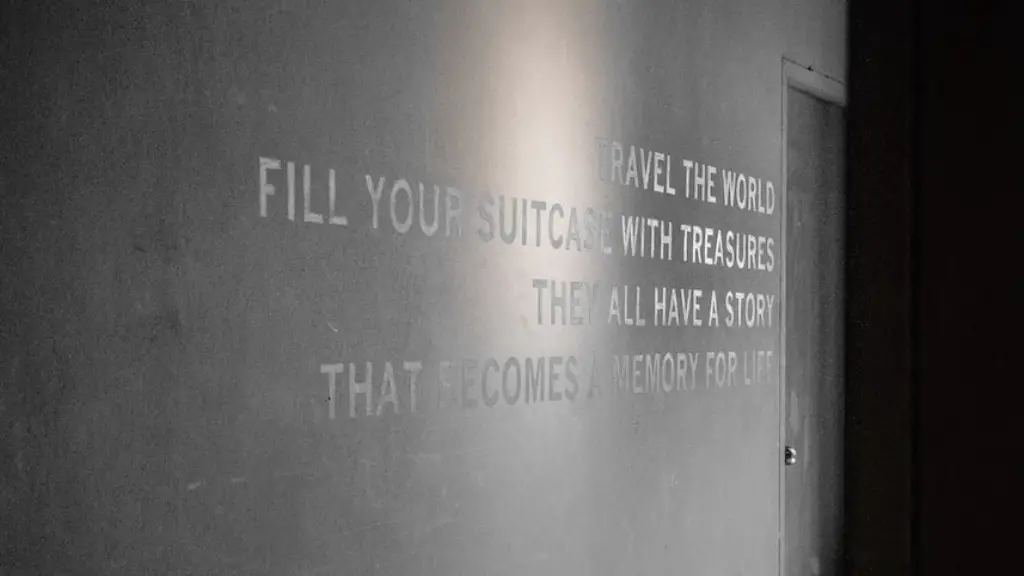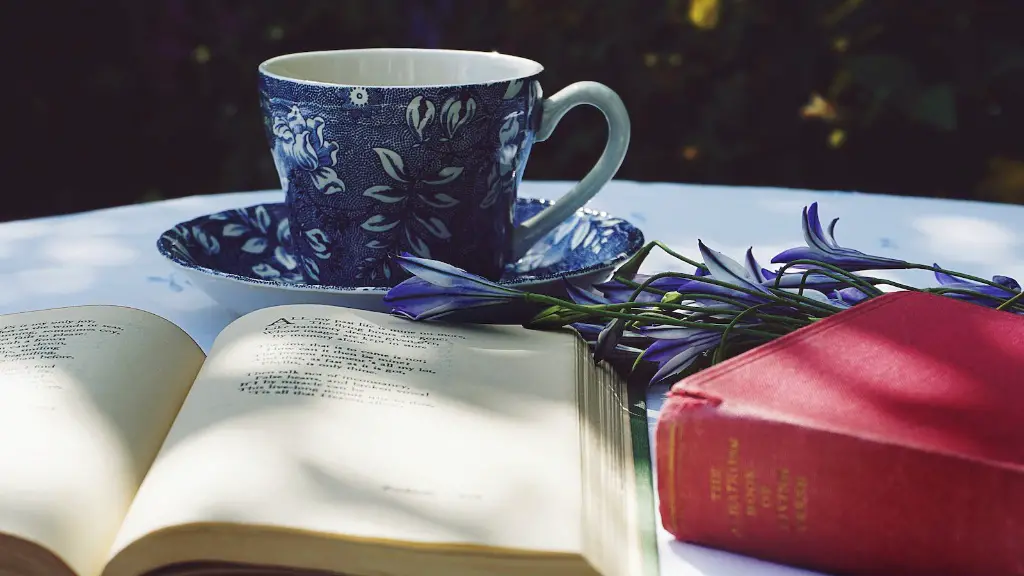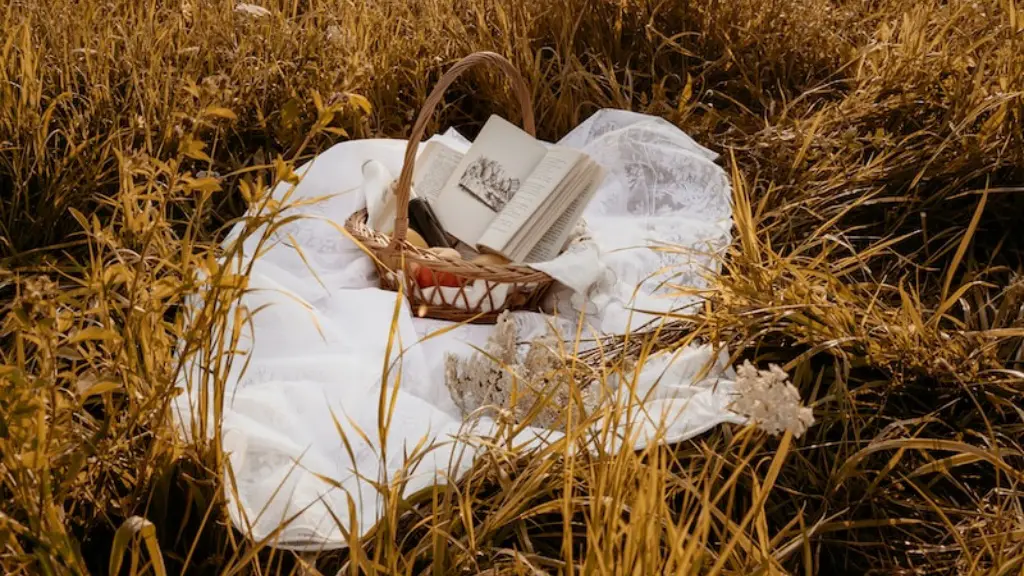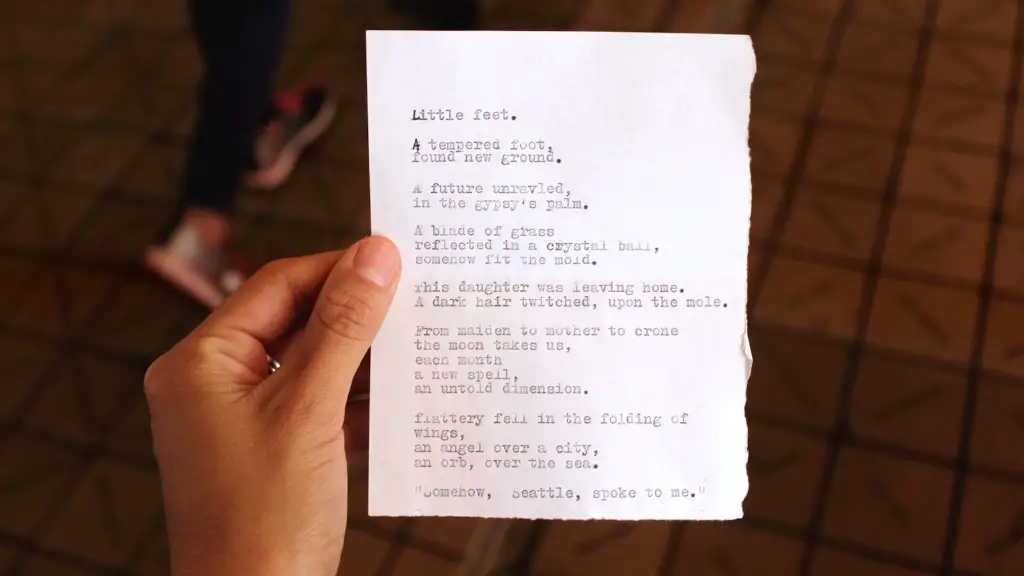Poetry is often said to be ‘different’ from prose. What, precisely, makes it so? To answer this question, one must look to the very definition of poetry and how it differs from other forms of literature, as well as how it has been used throughout history. To begin with, poetry is a type of literature that uses patterned language and sound to create an emotional connection and a reflective response within its readers. Whereas prose is the more general term for written language and is the most commonly used form of language in books, magazines and other everyday communications, poetry is characterized by itsmeter, unique structure, and stylized language.
It is the structure of poetry that often distinguishes it from prose. Whereas, in general, prose follows a linear narrative and relies upon critical thinking, poetry is often more expressionistic and intuitive– often employing repetition, rhyme, and alternate forms of syntax or phrasing to set the tone. Many poets use meters or rhythmic patterns, such as iambs, anapests, and dactyls, to create a flow in their poems. This is a technique known as versification, which is the practice of creating a certain rhythm by stringing syllables together in a certain order. This particular structure can help convey a certain meaning or emotion to its reader.
In addition to its structural properties, poetry can also convey emotions more directly than prose. It does this through the use of figurative language such as metaphors, allusions, similes, and other literary devices. Poets often use unusual imagery to convey the inner feelings of their characters more vividly than the more straightforward description of the plot one finds in prose. This ability to express a hidden message is an ability that sets poetry apart from prose.
Throughout history, poetry has been utilized as a form of cultural expression. It has been used by many cultures as a way to express their thoughts and feelings, as well as to share their unique perspectives on life. In many ancient cultures, poetry was even used as an oral tradition, recited by bards, priests, or even kings. This powerful combination of words and art helped bring stories alive for their audiences and provided a way for them to connect with their culture in a much deeper way than prose could.
Overall, the differences between poetry and prose are vast and varied, from the structure and sound to the emotional resonance and depth of meaning. What separates them is the way they are experienced. While prose is meant to be read, poetry is meant to be felt. Its uniqueness comes from the ability to evoke an emotion or create an atmosphere in the reader which transcends written words. In this way, poetry will forever remain an important tool for cultural expression and storytelling.
The Power of Poetry
The power of poetry is perhaps its greatest defining feature. This quality of poetry allows it to transcend any language or cultural barrier. Through its use of symbolism, imagery, and structure, poetry can stir the most powerful of emotions or conjure up vivid imagery in the minds of readers, painting a vivid picture that stays in their heart and mind. This power can be seen in the works of renowned poets such as William Shakespeare, Emily Dickinson, and Maya Angelou.
Poetry can also help us better understand ourselves. Through its use of figurative language, we are encouraged to reflect more deeply on our own values and opinions. By pushing us to mull over these thoughts, poetry can help us to better comprehend our true selves and make more informed decisions going forward. It is an incredibly empowering tool, allowing us to unlock a reservoir of emotions that may have been repressed or split away from us.
Poetry can capture meaningful moments and remind us of them, even years later. From our childhoods to our future, poem can be gateways to our past, our present, and our future. They offer us an alternative to detail-oriented prose, encouraging us to find beauty and meaning in what may initially seem like chaos or a lack of coherence. Whether it be haikus, sonnets, or epics, poetry can show us the world in ways that prose may not be able to.
Last but certainly not least, poetry can be extremely therapeutic for those who write it and for those who read it. The process of writing a poem is a way for us to vent our frustrations, impulses, and otherwise unspoken thoughts. For the reader, discovering a hidden meaning in a poet’s work can be incredibly healing and inspiring. In this way, poetry can help people process and communicate their emotions in ways that they otherwise may not be able to.
The Cultural Impact of Poetry
Poetry has been used not only to express individual feelings, but to capture the collective experience of entire cultures. From the ancient epics of Homer to the Harlem Renaissance to social media raps, poetry has been used to document the experiences and hardships of over the centuries. Through its many forms, poetry has been used to critique social and political systems, to remember forgotten tales, and to give voice to the oppressed.
In many countries, poetry has inspired social movements and served as an outlet for revolutionary thinking. In the United States, poets such as Langston Hughes and Gertrude Stein acted as catalysts of the Harlem Renaissance, inspiring hundreds of people to express their thoughts and ideas through their words. Abroad, poets such as Nazım Hikmet and Pablo Neruda have also used their poetry to push for justice and freedom.
Poetry has also forever been a vehicle for cultural expression, bridging gaps and bringing people together in a shared experience. It allows us to escape the mundane and gain insight into the lives of our fellow human beings around the world. By expressing our perspectives in the form of poetry, we are able to gain a greater understanding of the world around us.
As can be seen, poetry is so much more than just words on a page. It has the power to uplift, fight injustice, and inspire. This is why it stands out from various other forms of writing, as it has a lasting impression and power to transform the societal Narrative.
Poetic Devices
The use of poetic devices is another distinguishing feature of poetry. These devices are used to create a sense of rhythm, tone, and texture in the poem. Poets often use rhyme, assonance, alliteration, and onomatopoeia to create a pattern and a harmony that can more effectively convey their message. For example, a poet may use rhymes to emphasize a particular thought or emotion or to create internal connections between different lines or ideas.
Other types of poetic devices, such as meter and imagery, can also help a poem capture the attention of its readers. Meter is often used to create a pattern of syllables throughout a poem, creating a steady rhythm that can add an intensity to the narrative. Whereas imagery is the practice of using words and phrases to create vivid pictures in the minds of readers, allowing them to more fully engage with the poem and the artist’s message.
Ultimately, by think contrasting poetry with prose, we can see how poetry is able to utilize a much wider range of tools to create a more engaging and meaningful experience. By combining the power of sound, imagery, and poetic devices, an artist can breathe life into an otherwise ordinary narrative and better connect with their audience.
Modern Poetry
Recently, poetry has begun to take on new forms, pushing the boundaries of what has traditionally been considered “poetry.” Spoken word, for example, recently has become an increasingly popular form of poetry. It combines traditional poetic techniques such as rhythm and imagery with more informal and conversational language, allowing the artist to give a more dramatic presentation to their work. It also allows poets to directly connect with their audience by emphasizing their delivery and presence.
Then there is rap, a form of poetry that known for its fast-paced delivery and its often intricate wordplay. This type of poetry utilizes the same poetic techniques seen in traditional forms of poetry, but also places a heavy emphasis on beat and rhythm, allowing the artist to create a unique sound that can add an additional level of depth and emotion to their work.
These new forms of poetry are an example of how the form continues to evolve and grow. Though these new forms may look and sound different than the traditional forms, they demonstrate how poetry’s elasticity allows for constant growth, innovation, and evolution.
The Legacy of Poetry
The influence of poetry extends throughout history and across cultures. For hundreds of years, poets have used their words to share their experiences and learn from their observations. And it is this sharing of stories and perspectives that will continue to ensure the longevity of this form of art. Poetry may change over time, but its impact and importance will remain for centuries to come.
Poetry has transcended language and cultural barriers, connecting us all on an emotional level like no other form of writing can. It is a powerful tool that allows us to think critically, explore our thoughts and feelings, and unleash our creativity. By blending creativity and critical thinking in this unique form of art, poets helps us to make sense of our world and build bridges between people and cultures. This, in turn, can help us foster a better sense of empathy and understanding, enabling us to grow and better connect with each other, no matter our backgrounds.
